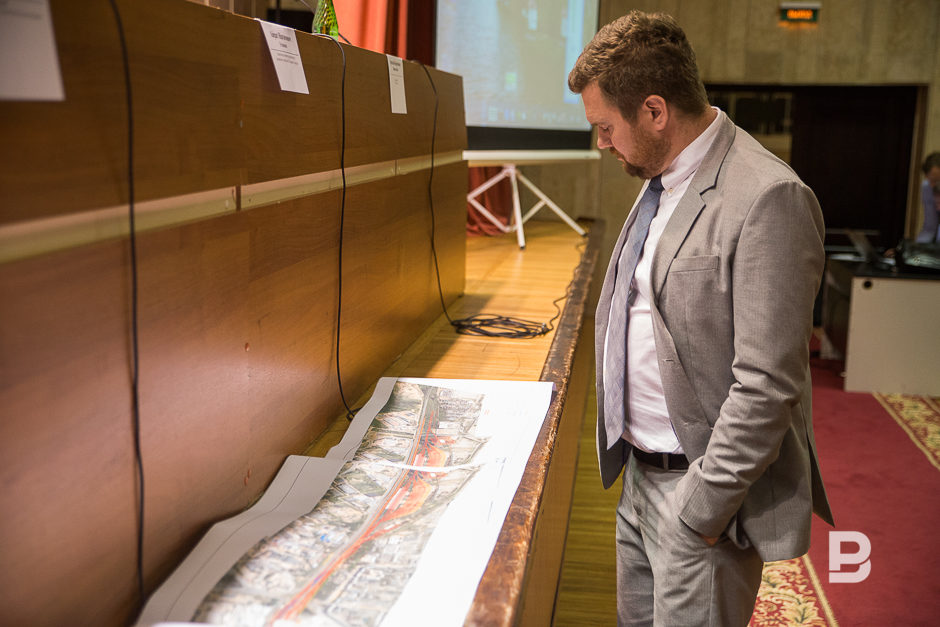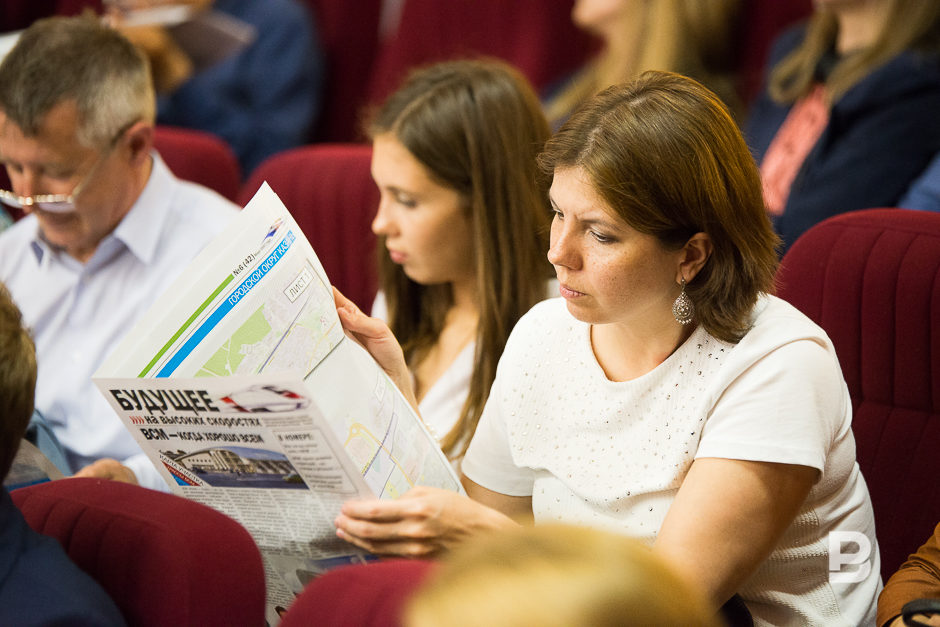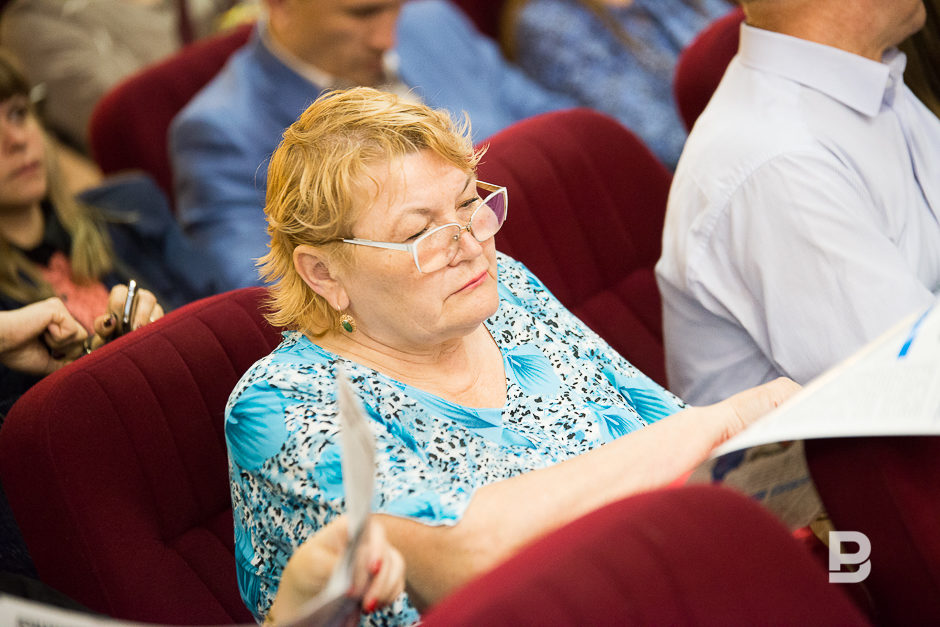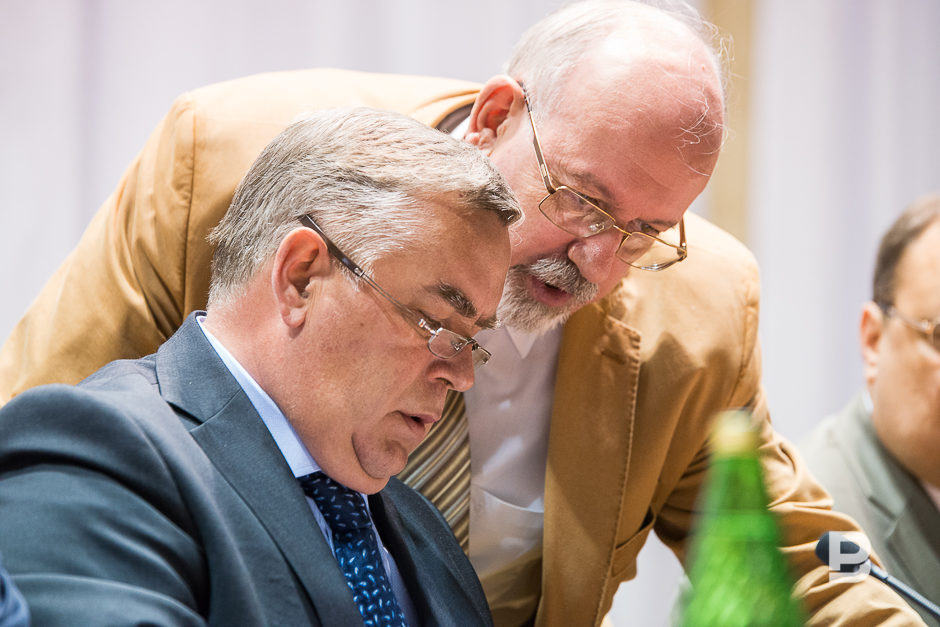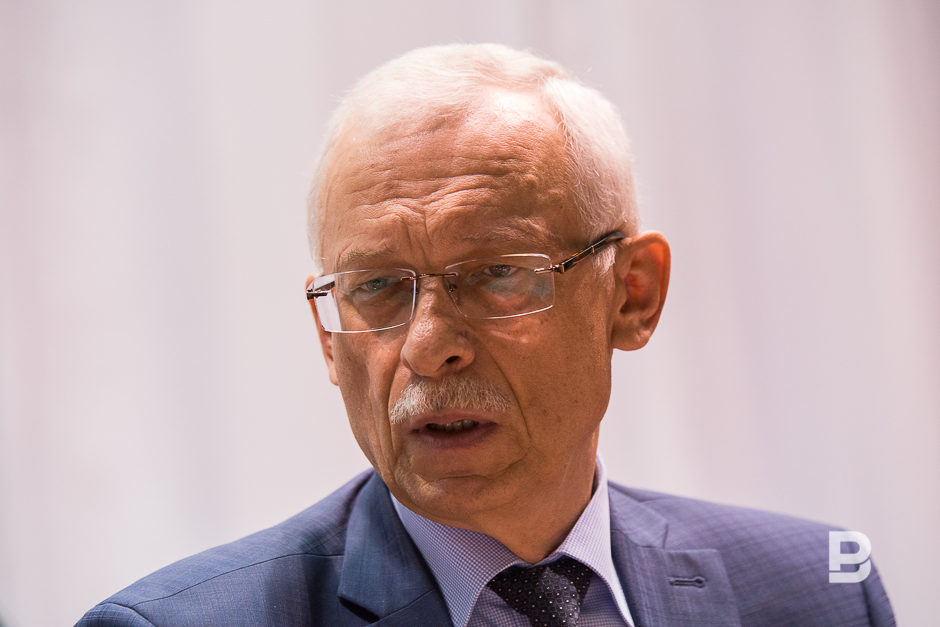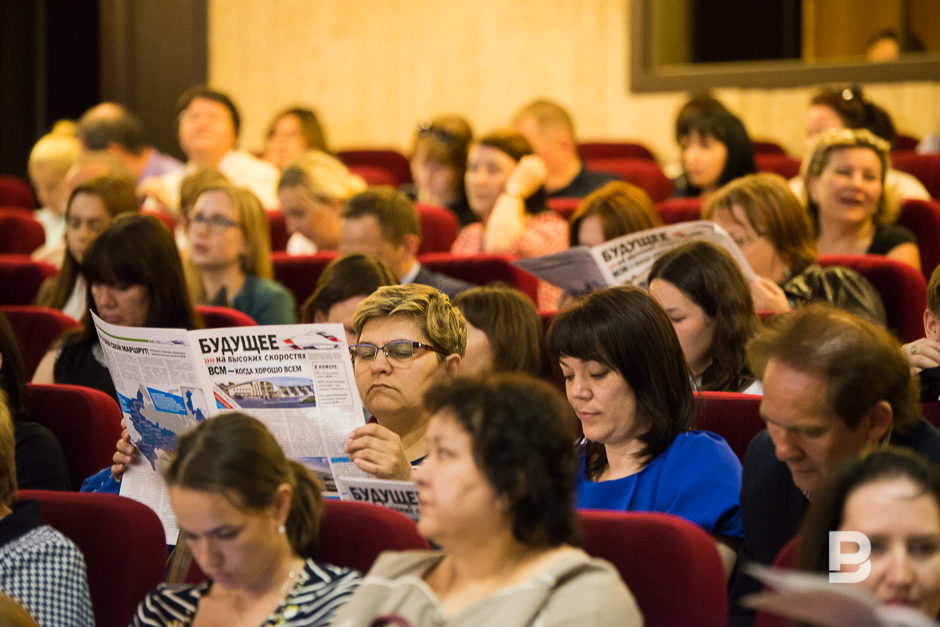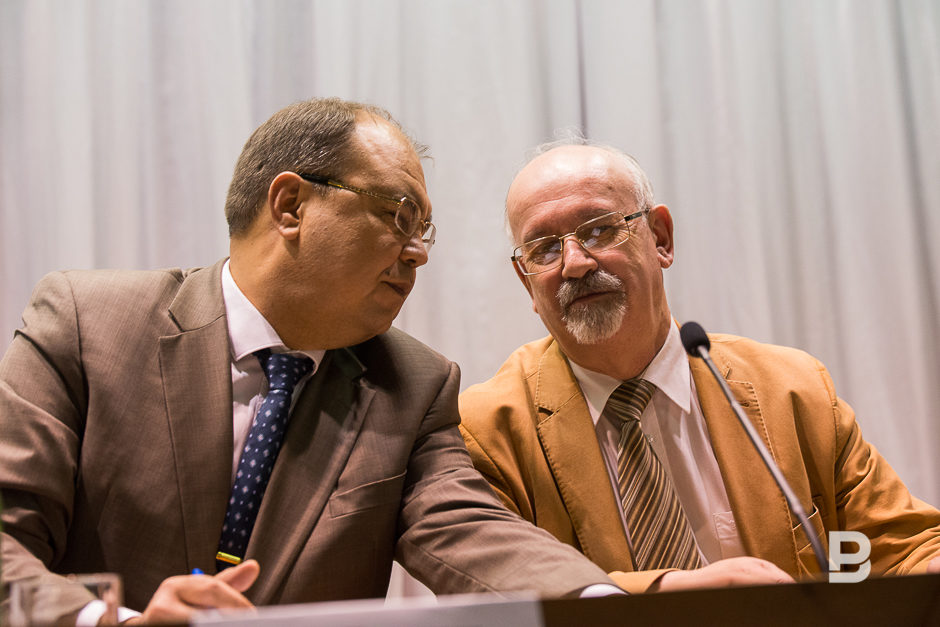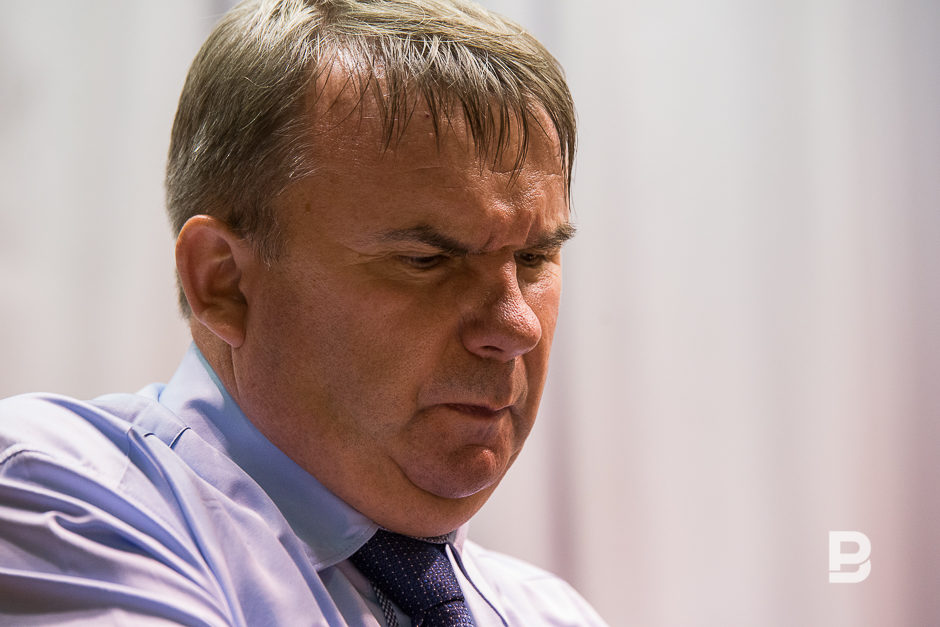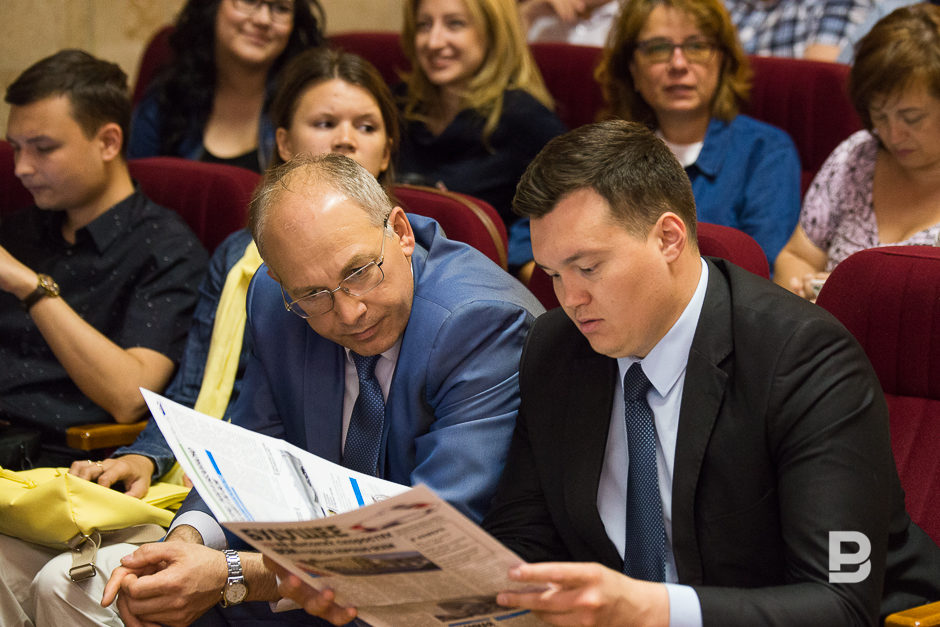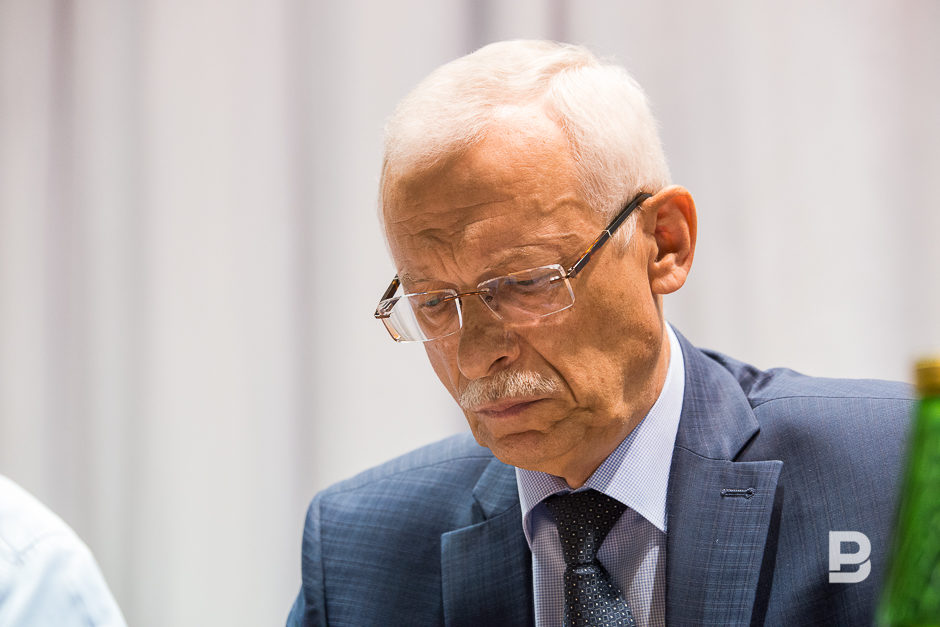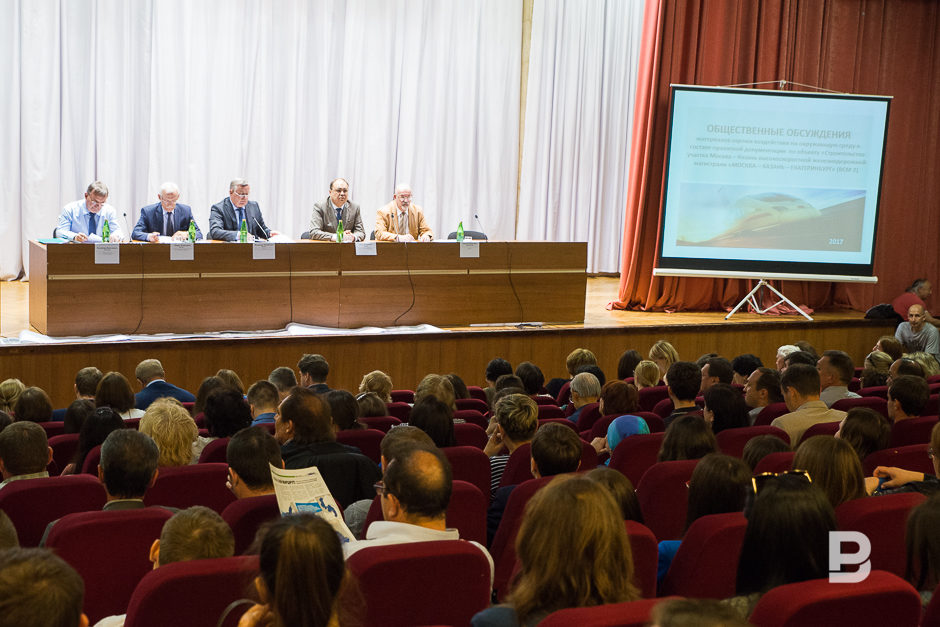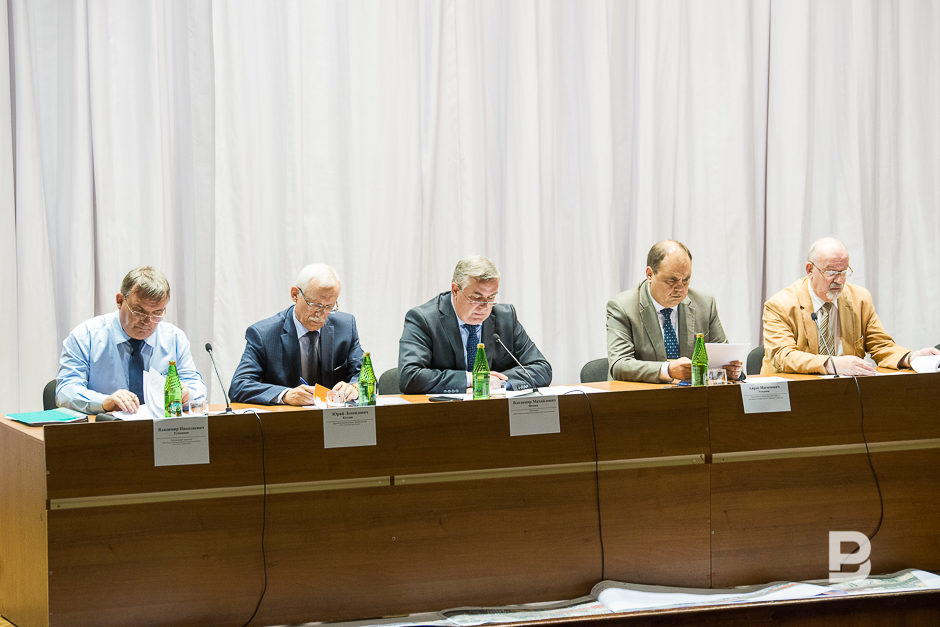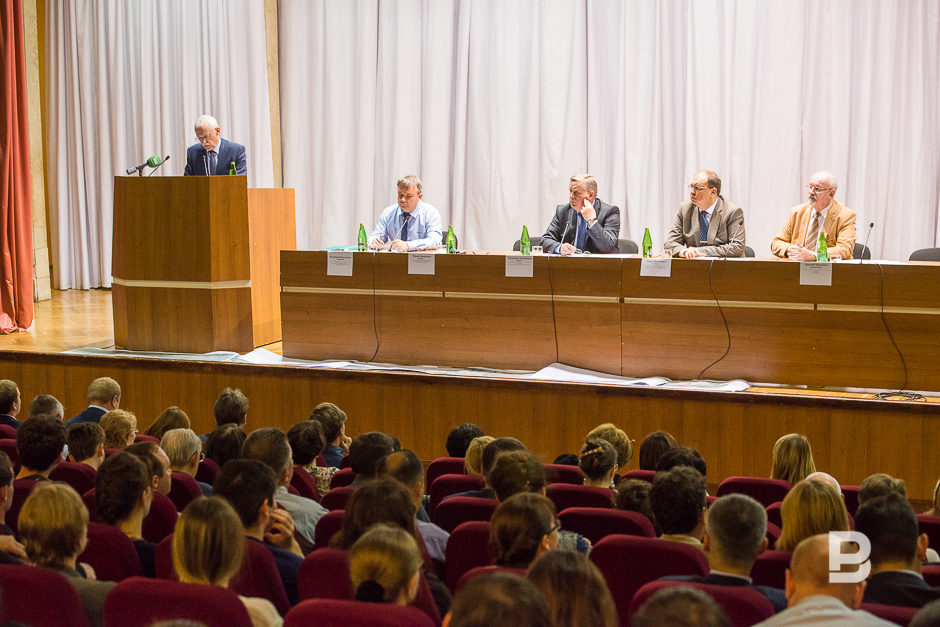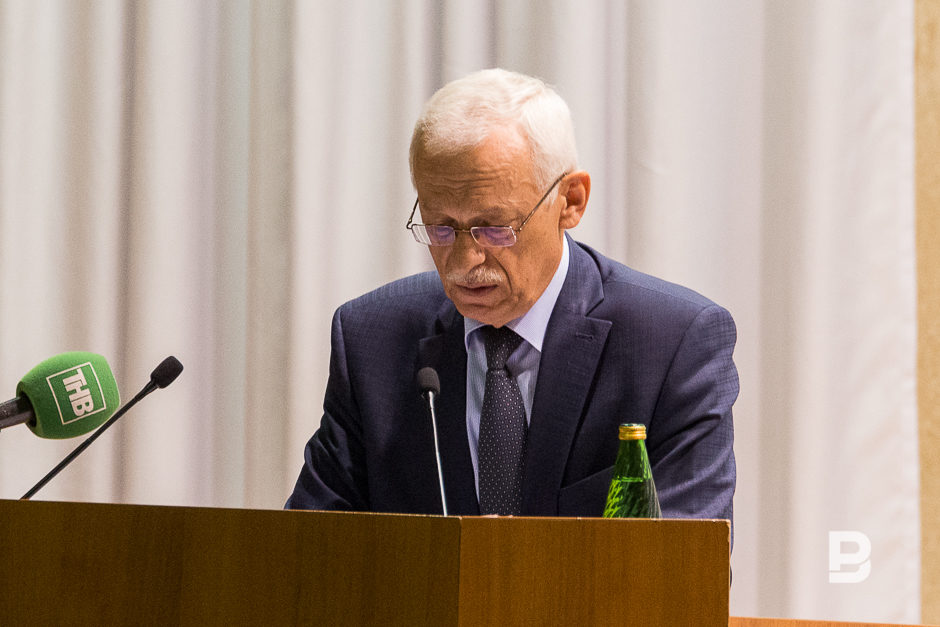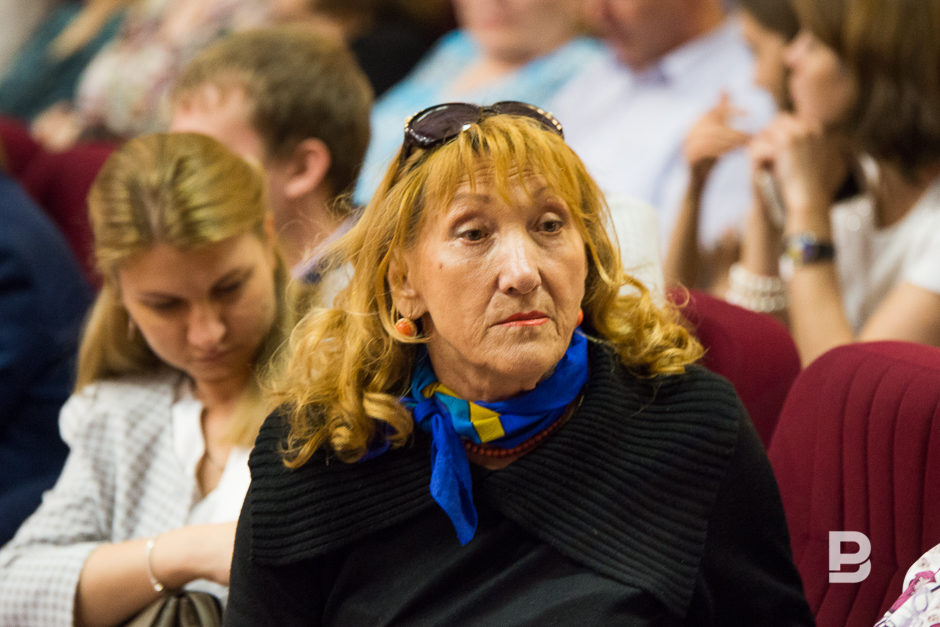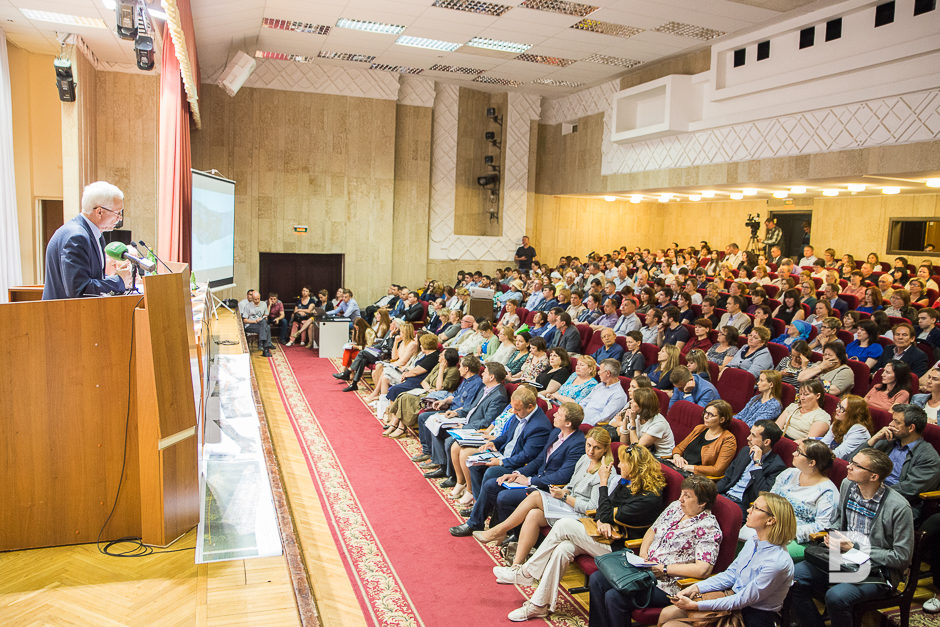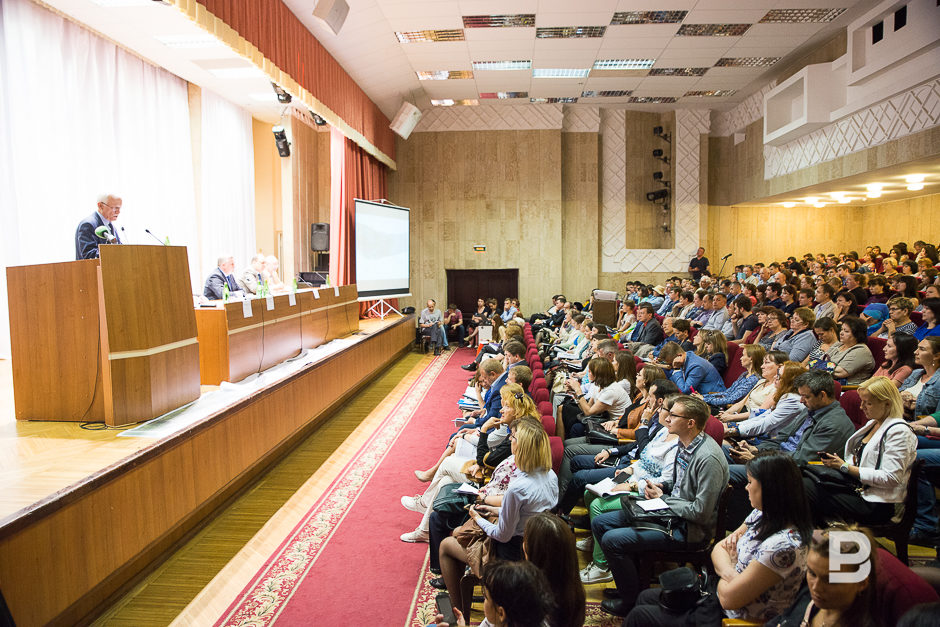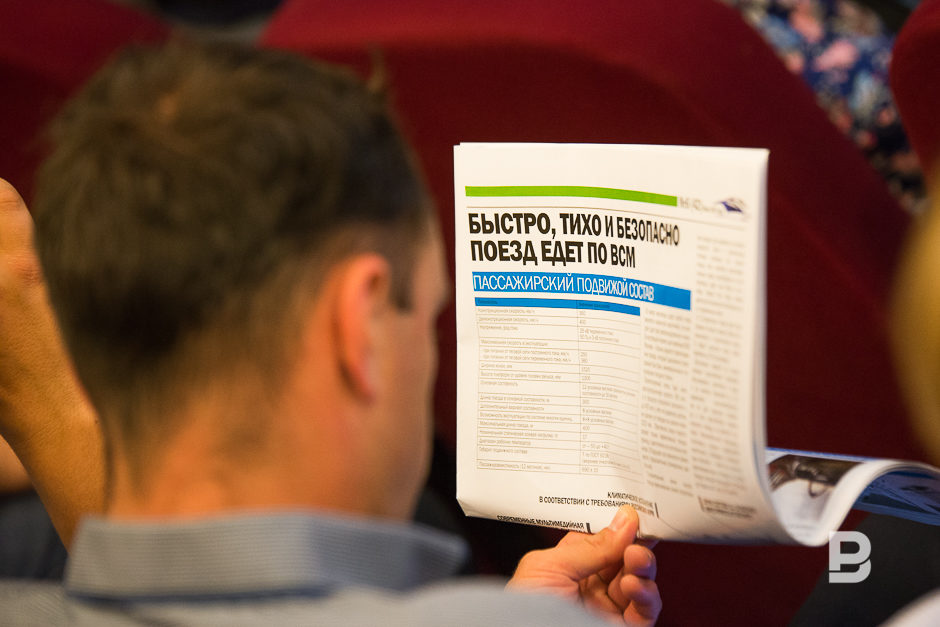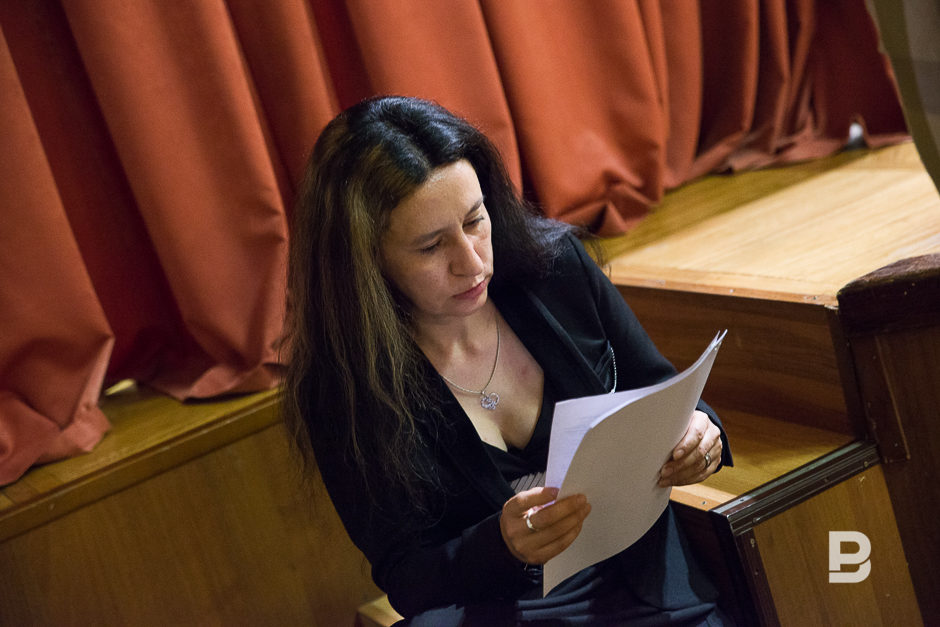150,000 trees in Tatarstan to be sacrificed for the high-speed railway
The Moscow-Kazan High-Speed Railway will give problems to Tatarstan citizens already at the construction stage, flora and fauna can experience damage
Public hearings were held in Zelenodolsk where they discussed the environmental impact during the construction of the Moscow-Kazan HSR. The way will go thorugh Tatarstan through Zelenodolsk district and Kazan. The officials assured residents that benefits from the construction are much more than damage. However, Tatarstan citizens have not agreed with everything. At the time of construction the amount of harmful emissions and the noise level will be increased. But the main problem is that 150,000 trees will be cut down. The correspondent of Realnoe Vremya attended the event.
Will there be money for the HSR?
Public hearings were held in Zelenodolsk on 13 June to discuss the materials of evaluation of environmental impacts during the construction of the high-speed highway Moscow-Kazan. The presentations of the responsible for the implementation of the project were held in the framework of the event, journalists as well as residents of Tatarstan could ask them questions. The HSR will go through Tatarstan on the territory of Zelenodolsk region and will also cover Kazan.
The first speaker was the head of the Department of construction and new technologies High-Speed Rail Lines JSC Yury Kotlov. He noted that the implementation of the Moscow-Kazan HSR project improves investment attractiveness of the regions, mobility of business activity of the population, development of transport links in the regions. One of the key arguments ''for'' was the reduction of transportation time from one capital to another — four times (from 14 hours to 3,5 hours). According to Kotlov, the service is planned to be implemented in four classes to ensure availability to all segments of the population. He also said that the rolling stock of the HSR will be eco-friendly (emissions three times less than urban road transport) and energy secured.
''The Moscow-Kazan HSR will be, in fact, a regional subway and it will extend the boundaries of agglomerations,'' said Yury Kotlov.
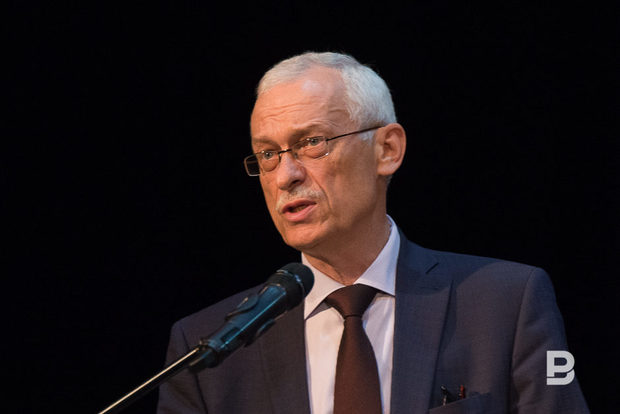
Besides, in his speech, he mentioned the participation in the financing of the project of representatives of China and Germany. Answering to the question of Realnoe Vremya after the event, Yury Kotlov stated that the contracts with Chinese and German businessmen have not been signed yet, although they had been previously announced. Russia has already allocated 90 million for the construction of the Moscow-Kazan HSR.
About noise and environment
Not only the presentations of the speakers but also two films-presentations were to represent the HSM in the best light to the public. The films told about the advanced materials and technologies to be used in the construction of the lines, the construction and reconstruction of new facilities (it is assumed that the appearance of the station Kazan-2 will be changed to more modern one) and meticulous care of the rolling stock. The authors of the videos also assured of the observance of environmental norms in the construction of the HSR.
Chief specialist of Mosgiprotrans JSC Olga Duginova noted that the protected areas do not fall within the boundaries of the HSM:
According to Duginova, the Mosco-Kazan HSR is not a source of impact on atmospheric air, there are no sources of emissions of polluting substances. But during the construction works there may appear emissions from the engines of road construction equipment and dust from various construction works. According to experts estimates, in the period of very active work there may be observed a slight excess of nitrogen dioxide at a distance of 50 m from the construction sites.
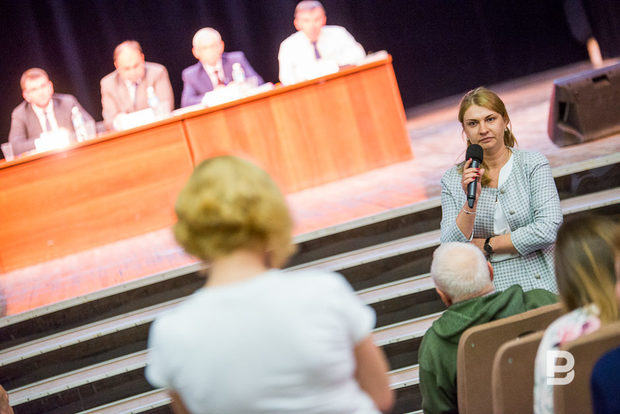
Barely audible dissatisfaction in the audience was interrupted by the words of Olga Duginova about the environmental activities provided. She attributed to them a distribution of works, preventing of machines with tireless engines, moisturizing of materials, and covering of them with tents.
It became known that under certain conditions during the construction the permissible noise level will be achievable only 170 metres away from the site. That is, all who live closer to the potential building site are not in the most comfortable conditions.
For this case, it was the provided the speech of a specialist-acoustics, who confirmed that on some sections of the pipeline there will be installed noise screens, and during the construction their mobile variety will be used.
At the expense of cut down trees
Questions to the speakers related to the environment (deforestation, destruction of fish) and potentially harsh living conditions due to the construction. The answer to the first question was: yes, the trees in Tatarstan will be cut down — about 150,000 trees (but it is planned to compensate by other plantings), a possible loss of fish will be also restored, and for wild animals there will be created special passages.
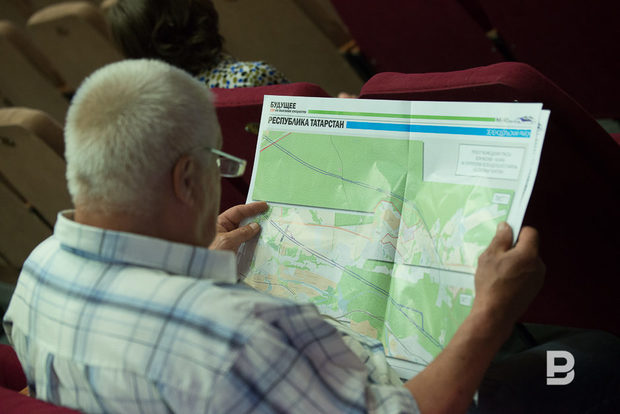
But the question of a resident and mother of two children and expecting a third child concerned other problem. According to her, she does not want to live 60 meters away from the construction site in dust and noise, but she also can't sell the land and the house — no one will buy. The woman was assured that there will not be noisy (they again told about the noise screens). However, judging by the reaction of the woman and other residents who came to the hearing, they did not believe it.
In conclusion the speaker was addressed another question of the HSM passage near the forest park Lebyazhye. Earlier, activists-environmentalists, fearing for the fate of the green zone, sent a letter to the Council on human rights under the President of the Russian Federation. After that, at a specially meeting the Council recommended to exclude the passage of high-speed railway through the urban forest Lebyazhye. The answer was given to it as well: the recommendation has been considered, but the high-speed rail route has not been changed.

